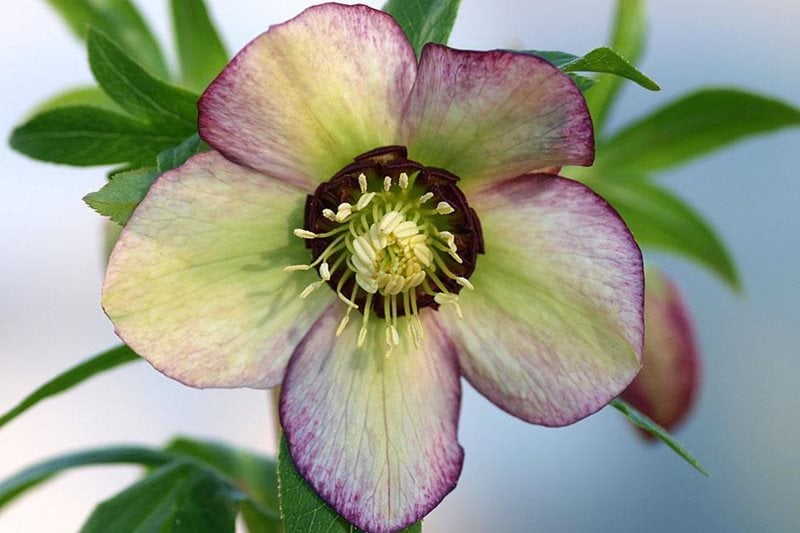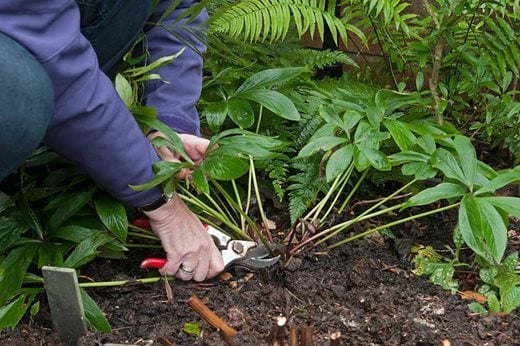Hellebores are long-lived, reliable winter favourites - now's the time to check them over and nip any problems in the bud, says plantsman Graham Rice
 The first hellebores will be coming into flower soon, if they’re not blooming already, and it’s around this time that evidence of problems may become apparent. Fortunately, there’s still time to do something about them.
The first hellebores will be coming into flower soon, if they’re not blooming already, and it’s around this time that evidence of problems may become apparent. Fortunately, there’s still time to do something about them.
One problem, though, is illusory. On frosty mornings the flowering stems may arch over till the flowers and buds touch the ground and it’s tempting to believe that flowering has come to a premature full stop. But no, by lunch time, or even mid morning, they will be standing upright again and none the worse for the chill.
The kindest cut

I firmly believe that one of the most useful things you can do is to cut off last year’s foliage at the end of the season as this prevents hellebore leaf spot disease being carried through the winter on the leaves and infecting the flowers. November is the best time, but it’s not too late; simply cut off the old leaves of stemless kinds such as Helleborus × hybridus right at the base.
The so-called hellebore black death is more serious. There is no cure for this virus disease and infected plants should be dug up and destroyed.
Soon after flowering comes the time when it’s important to step in and intervene to maintain the quality of your plants. Hellebores are specifically adapted to cross pollinate, so most of the seeds that fill the fat pods will be derived from two different parent plants; this means that they’re unlikely to be the same as the plant you originally chose and which carries the pods.
Often, the seeds drop back into the clump where they may eventually germinate and flower, diluting the impact of the parent plant with inferior seedlings. I always cut off all the flower stems before the pods split.
- Find information and supplier details for more than 900 kinds of hellebore with RHS Find a plant
Finally, we’re often encouraged to divide our hardy perennials every three years and to replant the healthiest pieces in improved soil. However hellebores, like hostas, are best left to mature into large clumps and not split. But without the chance to improve the soil, regular mulching and feeding in the autumn is wise.
Left to right: hellebore leaf spot; seed pods shed plentiful seeds when mature; hellebore black death
See also

